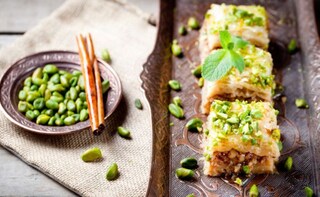With Diwali knocking at our door, it's time to get festive again. A great time to catch up with friends and family, Diwali is synonymous with firecrackers and delicious food. No festival is complete without sweets and snacks, they are one of the most celebrated gifts and also a great way to welcome guests at home.
The problem of food adulteration is so acute that 1 in 5 food items fail quality checks (Herald, Panjim, 28.07.2015). Adulteration can be intentional, where substandard substances are added to the food or valuable substances are removed for economic gains. It can also be unintentional, due to carelessness or negligence. In either case, it can cause serious health hazards to the consumers. In spite of the provision of severe punishments for the culprits, it has been reported from states like Tamil Nadu that only about 16% of adulterers actually get convicted. Even home-made food must be made from raw materials purchased from reliable retailers, in order to avoid adulteration. Ready-made food items should ideally be branded, which will guarantee the best quality and standards of the food items being bought. We should also check for the best before/expiry date, the batch/lot number, as well as the FSSAI logo and license number on the packs.
Simple Tests to Check for AdulterationFood items and raw materials can be adulterated by various substances that are cheaper, have a lower nutrient content and can even be toxic. There are many examples, some of which have been briefly discussed below.
The problem of food adulteration is so acute that 1 in 5 food items fail quality checks (Herald, Panjim, 28.07.2015). Adulteration can be intentional, where substandard substances are added to the food or valuable substances are removed for economic gains. It can also be unintentional, due to carelessness or negligence. In either case, it can cause serious health hazards to the consumers. In spite of the provision of severe punishments for the culprits, it has been reported from states like Tamil Nadu that only about 16% of adulterers actually get convicted. Even home-made food must be made from raw materials purchased from reliable retailers, in order to avoid adulteration. Ready-made food items should ideally be branded, which will guarantee the best quality and standards of the food items being bought. We should also check for the best before/expiry date, the batch/lot number, as well as the FSSAI logo and license number on the packs.
Simple Tests to Check for AdulterationFood items and raw materials can be adulterated by various substances that are cheaper, have a lower nutrient content and can even be toxic. There are many examples, some of which have been briefly discussed below.
Advertisement
Advertisement
Advertisement
Advertisement
For the latest food news, health tips and recipes, like us on Facebook or follow us on Twitter and YouTube.
Advertisement
Tags:
